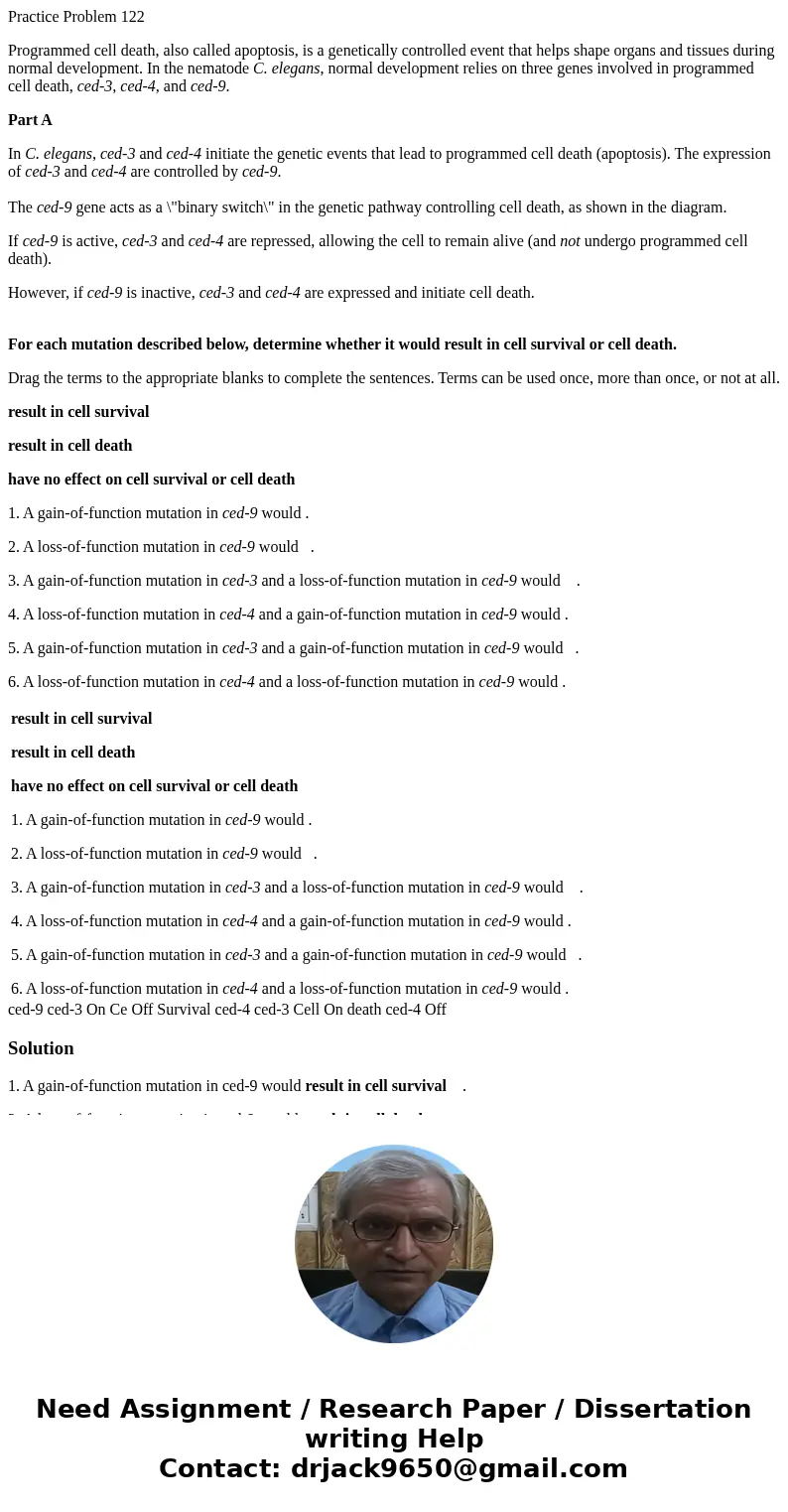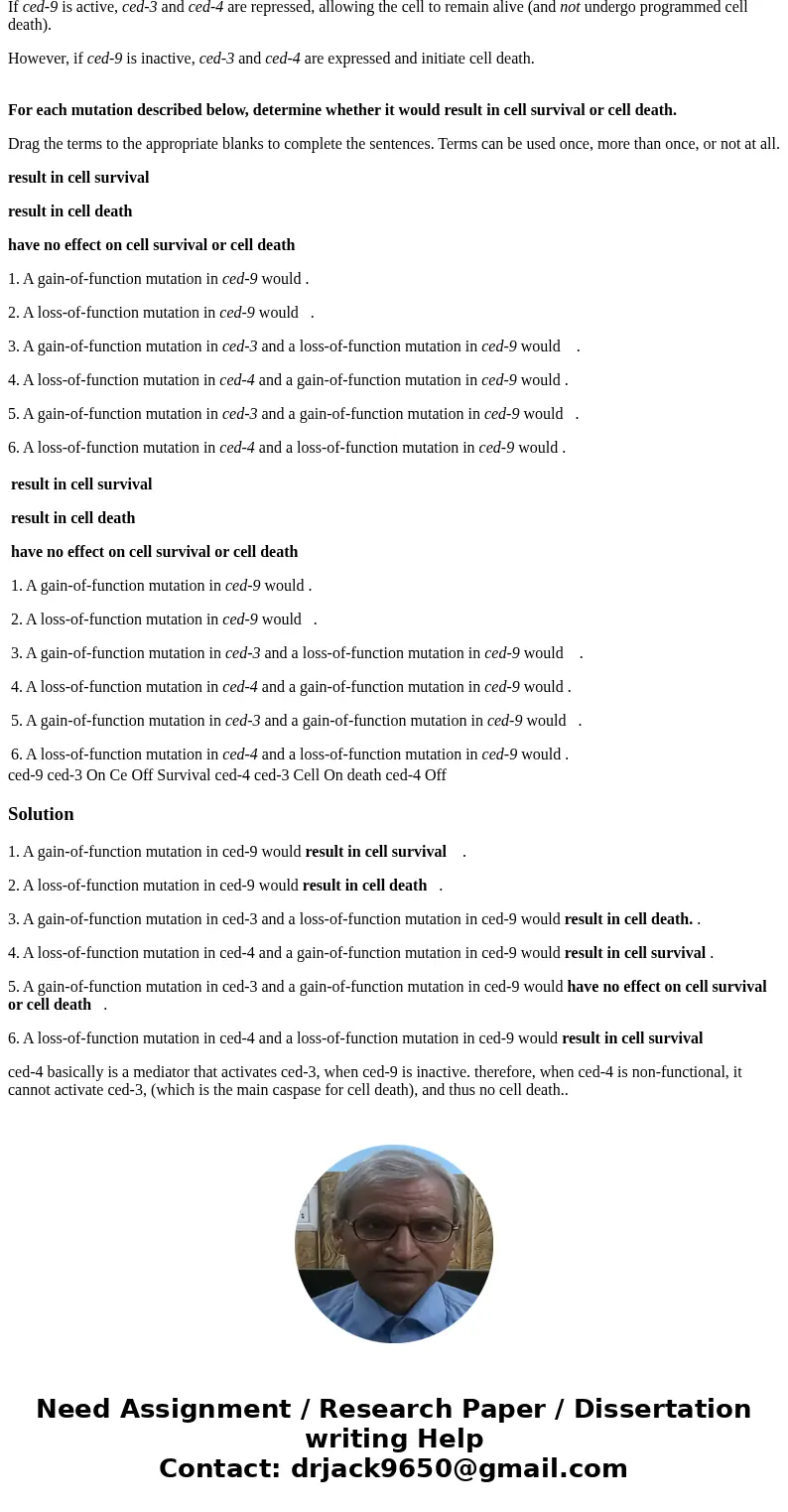Practice Problem 122 Programmed cell death also called apopt
Practice Problem 122
Programmed cell death, also called apoptosis, is a genetically controlled event that helps shape organs and tissues during normal development. In the nematode C. elegans, normal development relies on three genes involved in programmed cell death, ced-3, ced-4, and ced-9.
Part A
In C. elegans, ced-3 and ced-4 initiate the genetic events that lead to programmed cell death (apoptosis). The expression of ced-3 and ced-4 are controlled by ced-9.
The ced-9 gene acts as a \"binary switch\" in the genetic pathway controlling cell death, as shown in the diagram.
If ced-9 is active, ced-3 and ced-4 are repressed, allowing the cell to remain alive (and not undergo programmed cell death).
However, if ced-9 is inactive, ced-3 and ced-4 are expressed and initiate cell death.
For each mutation described below, determine whether it would result in cell survival or cell death.
Drag the terms to the appropriate blanks to complete the sentences. Terms can be used once, more than once, or not at all.
result in cell survival
result in cell death
have no effect on cell survival or cell death
1. A gain-of-function mutation in ced-9 would .
2. A loss-of-function mutation in ced-9 would .
3. A gain-of-function mutation in ced-3 and a loss-of-function mutation in ced-9 would .
4. A loss-of-function mutation in ced-4 and a gain-of-function mutation in ced-9 would .
5. A gain-of-function mutation in ced-3 and a gain-of-function mutation in ced-9 would .
6. A loss-of-function mutation in ced-4 and a loss-of-function mutation in ced-9 would .
| result in cell survival result in cell death have no effect on cell survival or cell death 1. A gain-of-function mutation in ced-9 would . 2. A loss-of-function mutation in ced-9 would . 3. A gain-of-function mutation in ced-3 and a loss-of-function mutation in ced-9 would . 4. A loss-of-function mutation in ced-4 and a gain-of-function mutation in ced-9 would . 5. A gain-of-function mutation in ced-3 and a gain-of-function mutation in ced-9 would . 6. A loss-of-function mutation in ced-4 and a loss-of-function mutation in ced-9 would . |
Solution
1. A gain-of-function mutation in ced-9 would result in cell survival .
2. A loss-of-function mutation in ced-9 would result in cell death .
3. A gain-of-function mutation in ced-3 and a loss-of-function mutation in ced-9 would result in cell death. .
4. A loss-of-function mutation in ced-4 and a gain-of-function mutation in ced-9 would result in cell survival .
5. A gain-of-function mutation in ced-3 and a gain-of-function mutation in ced-9 would have no effect on cell survival or cell death .
6. A loss-of-function mutation in ced-4 and a loss-of-function mutation in ced-9 would result in cell survival
ced-4 basically is a mediator that activates ced-3, when ced-9 is inactive. therefore, when ced-4 is non-functional, it cannot activate ced-3, (which is the main caspase for cell death), and thus no cell death..


 Homework Sourse
Homework Sourse